It’s another St. Patrick’s Day, and rather than return to my old comic about the historic Saint Patrick, I thought I’d introduce you to some Victorian St. Patty’s Day greeting cards.
For the most part, they include some very sad, somber-looking children wearing green.
I think I might… weep? He looks so sad… so…. so sad.
Here are some Irishly-inclined children dancing.
Or are they dancing? Maybe they just have their hands outstretched and they’re sort of… leaning away from each other in a sad-but-festive way?
Why don’t they just… sit down.
There. Much better.
Here we have a small child—who appears to be in considerable pain—hollering about how St. Patrick was a Gentleman. I don’t know what the club is for. Possibly to put other children out of their misery?
Like this child…
OK, so he’s actually happy, although he appears to be celebrating the sweet release of death… death-by-giant-shamrock-and-depressed-elderly-pig.
As is customary on this fine day.
Not everyone gets the day off (or gets to enjoy the sweet release of death) as we can see here…
Guy looks like he’s been working a 9-to-5 since he was four. I don’t know why he has to cart that wee pig around in her wooden wagon, but at least it’s honest work.
So, what’s with the sad children? Well, there’s no textbook entry that explains this phenomenon, but I’ll give my take.
These days St. Patrick’s Day doesn’t really have a somber tone to it, but back in the Victorian era, it was more closely associated with the fallout of Irish colonization. While technically Ireland played host to “English” colonizers since the 1100s, it wasn’t until the 1600s that the British rule began to feel particularly oppressive.
In the late 1500s-early 1600s, many battles were fought between the united English monarchy and the independent Irish feudal lords. Many of them fled or were executed by the British crown, and their lands were confiscated and turned over to English protestant settlers. The Irish culture was repressed—no more speaking Irish, no more practicing Catholicism. In 1588, it even became illegal to wear customary Irish clothing.
The Irish didn’t particularly approve of this subjugation, so they rebelled. Somewhere between 4,000-12,000 English settlers were killed as a result of these rebellions.
Eventually, these skirmishes led to a more violent crackdown from the English government. Through a series of laws designed to disenfranchise native Irish folk, a land-owning class of British Protestants was created in Ireland, and they ruled over mostly Irish Catholic tenants. Around 12,000 Irish natives were sold into indentured servitude in the East Indies and the Americas, while another 34,000 fled to the continent as refugees.
But back in the green, weeping grasses of the motherland, the English continued to exploit Irish labor on plantations. After so much displacement, most Irish families couldn’t afford to own their own land or turn their own profits on that land. Instead, they leased small portions of land from English landowners. They owed so much for the privilege of working that land that they could never get out from their cycles of debt (sound familiar?). They worked and worked and the landlords reaped all the benefits.
This is one reason Ireland became known for potato farming—potatoes had a high yield for a small amount of land. This was ideal for all those tenant farmers who could only afford to lease small parcels of farmland.
Obviously, that all went south with the Great Potato Famine in the mid-1800s, which led to even more Irish immigrants finding their way around the globe and away from their homeland.
Over the centuries, Irish culture has evolved to include an austere resilience to suffering, in addition to the playfulness of many old Irish customs. Those early years they spent celebrating St. Patrick’s Day outside their homeland must’ve been bittersweet, as we can see form the cards they made and sent.
On the one hand, St. Pat’s was a way to stay connected to their Irish identity. On the other, it was a stark reminder of the centuries of suffering and exploitation they had faced.
Take this card for example, which celebrates Irish heritage and laments the metaphoric enslavement of the Irish people in the same little verse (which was written by Thomas Moore, the guy on the postcard):
“Yet dark are the ties where no liberty shineth.
And sad the remembrance that slavery stains.”
So, yeah, Happy St. Patrick’s Day. Here’s a card about slavery.
For me, there are clear parallels between the Irish experience and the experience of contemporary workers. We, the middle and lower classes, are experiencing the effects of a type of feudalism. We don’t own the means of production, we don’t have ownership of the profits that we earn, we don’t own our own land our houses. We lease them or pay interest on loans.
We largely don’t have a say in who gets to make decisions for our wellbeing. Companies and capitalist systems are not democratic, and our democracy is currently being run like a company:
Our way of life is largely determined by people we didn’t choose to rule over us—large companies, investors and executives control most aspects about how we exist. They decide how and what we eat—what food we have access to, and what quality of food is “good enough” for the masses.
They decide what we wear—and the abysmal quality of what we wear. They decide what to manufacture, so they decide what we buy—from our pots and pans to our furniture to the cars we drive.
They decide what our cities look like, what our systems of transportation and communication look like, and how much every single thing costs.
We earn their profits for them, and they dole out small bits of that money back to us, which we then have to repay to our landlords, our banks, and whoever else owns the large entities that keep us from starving, going naked, and being uneducated.
I feel a lot of solidarity with the Irish these days.
So, if you celebrate St. Patrick’s Day, I hope you do so with a bit of the rebellious Irish spirit. No more tyrants. No more kings.
No more sad green children.
With that, Happy St. Pat’s! Pour one out for the working class homies today.
Yours in verdant green,
🍀Becca Lee, Haunted Librarian🍀
PS - But if you haven’t read my original comics about St. Patrick, it’s still worth a read on this festive occasion:






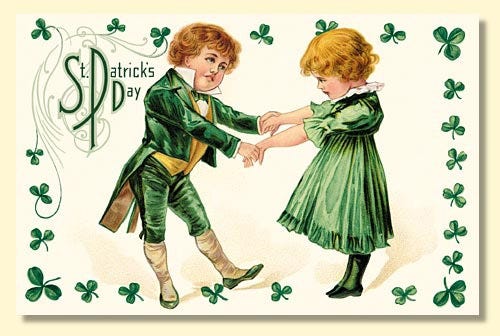
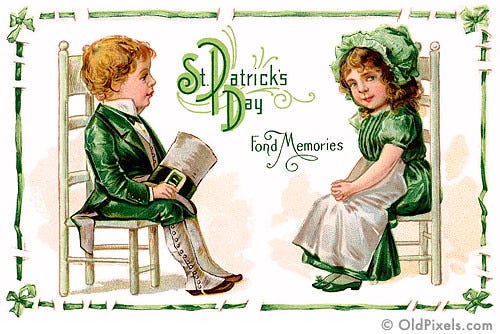
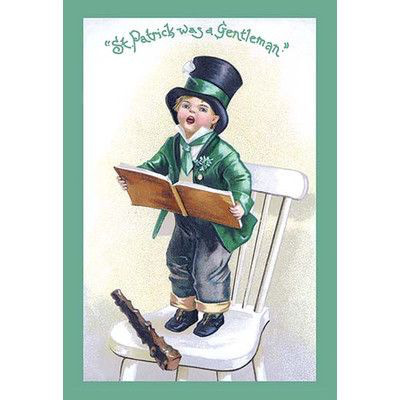
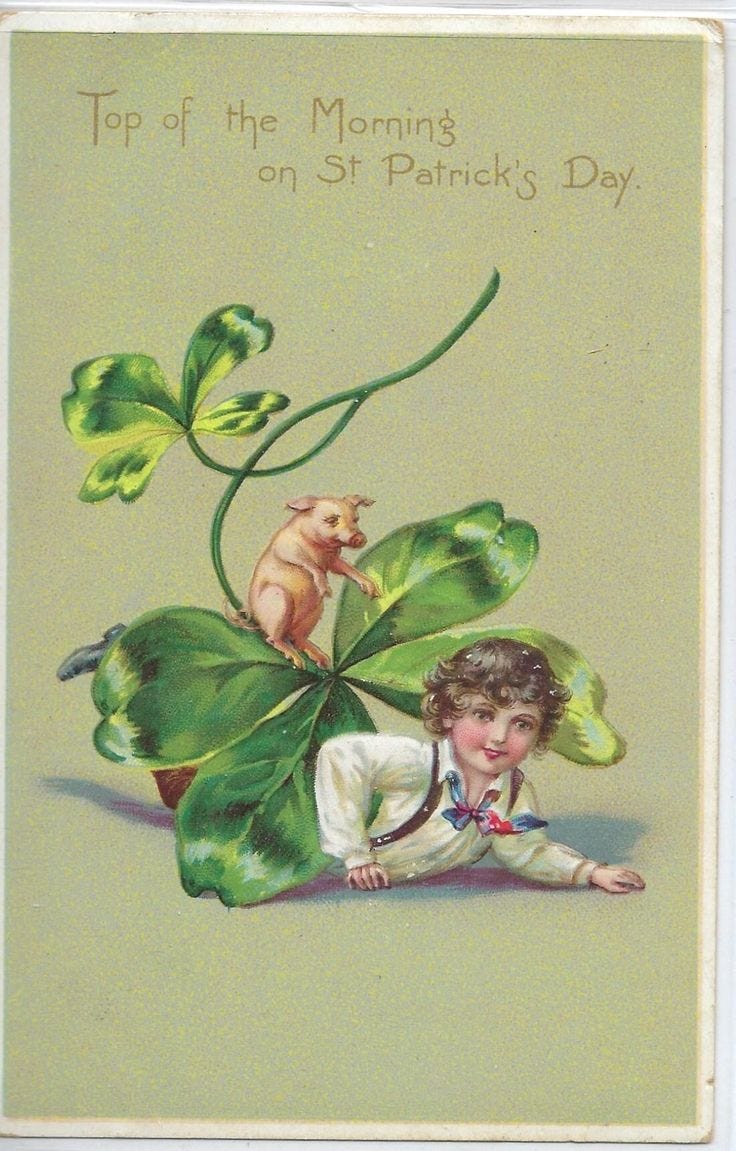
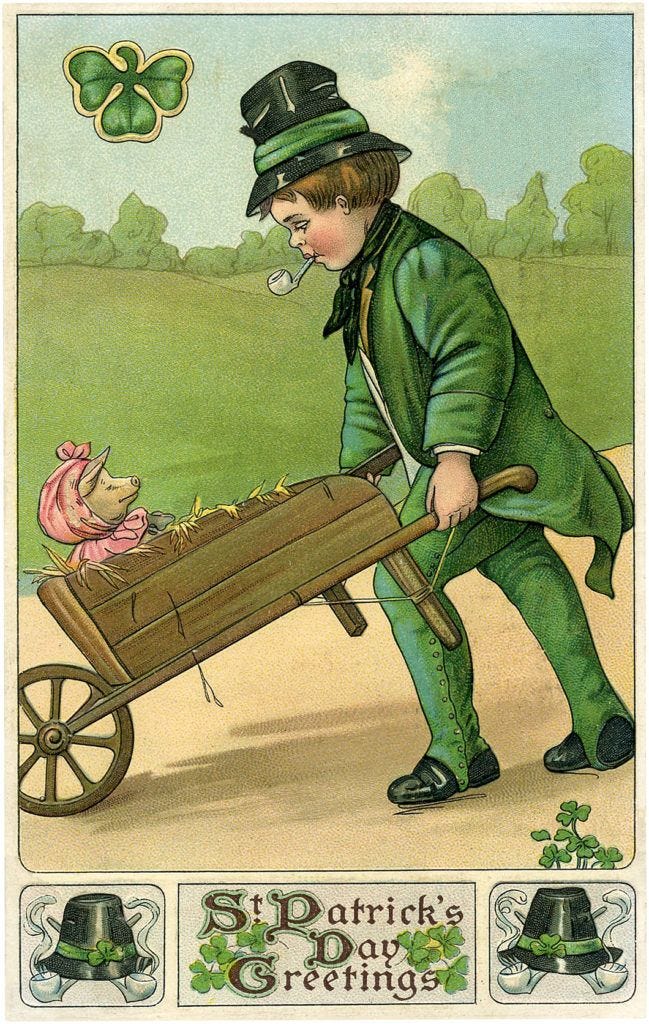
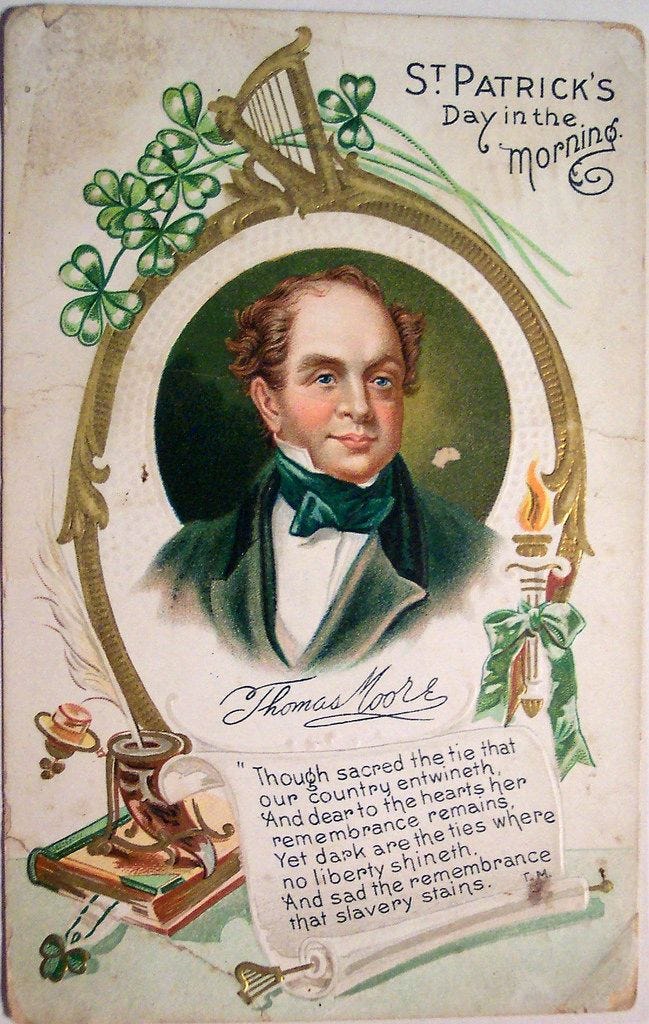

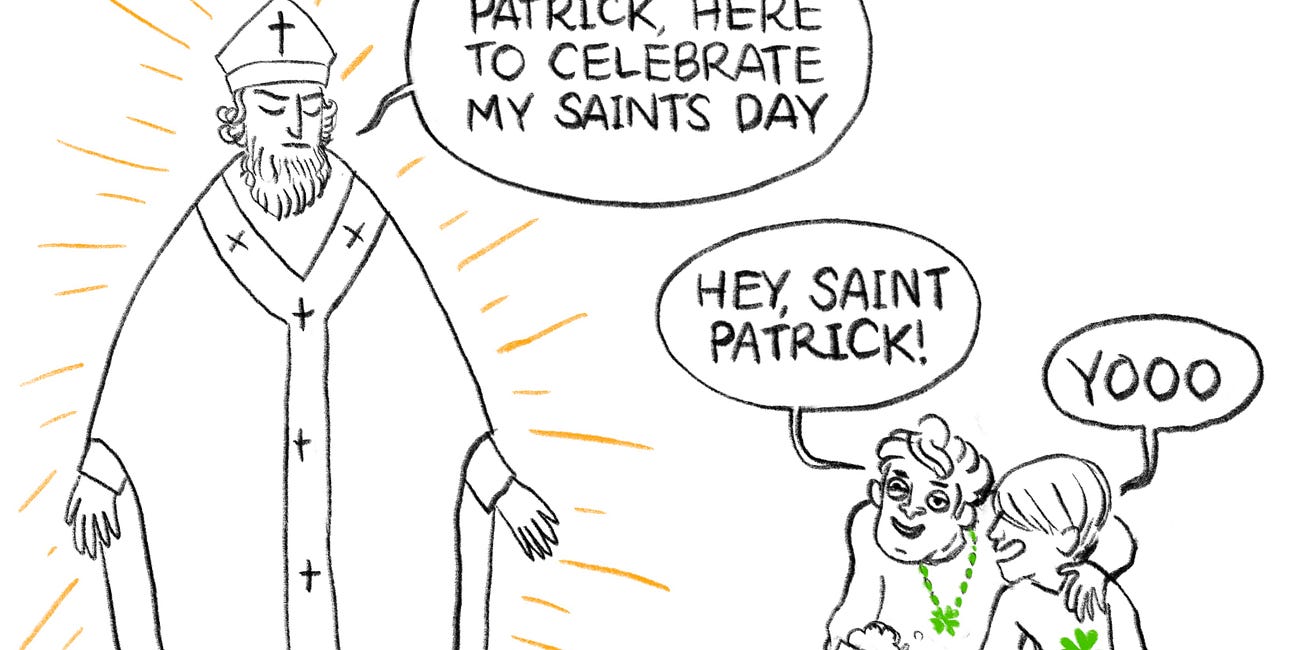
Once again speaking truth!! Thanks for sharing the sad, green children! ☘️